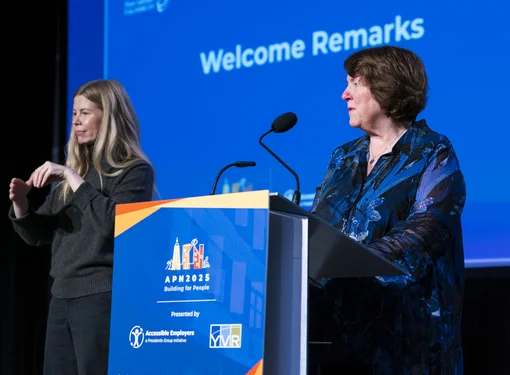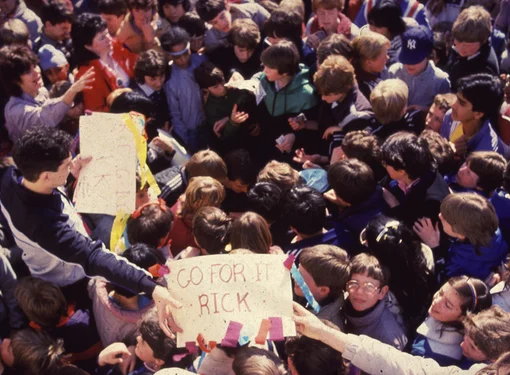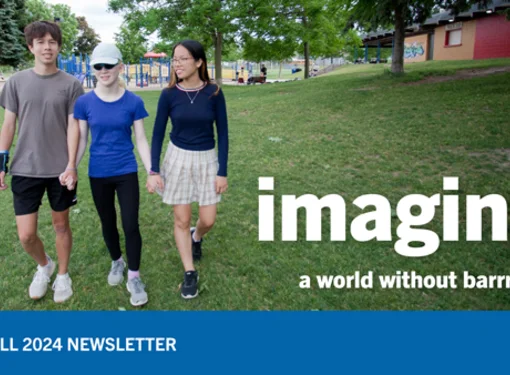An ableist society isn’t an inclusive society
These days, you often hear the word ‘ableism’ talked about online, but the Oxford English Dictionary actually traces the word’s first use back to 1981 and defines it as “discrimination in favour of able-bodied” people.
That discrimination can take various forms, but in the broadest sense, it can be broken down into physical and attitudinal barriers against people with disabilities. These barriers help enable an ableist society that keeps people with disabilities from being a part of their communities and living life to its fullest.
Physical barriers
An ableist society is partly the result of a lack of awareness about the accessibility needs of people with disabilities, so this is the perfect opportunity to shine a light on how various physical barriers can contribute to exclusion. Many examples exist, but here are three that make the world a less inclusive place.
- There’s no wheelchair-accessible entrance or elevator in a building. Many modern buildings have these facilities, but older buildings often don’t. This lack of accessibility limits the choices people with disabilities are able to make regarding where they live, work, or visit.
- There’s no braille on an elevator keypad and/or no recorded voice announcing floors. Without these, a person with vision loss doesn’t have the same level of independence as a person with full vision.
- There aren’t visual fire alarms in a public building. Again, modern buildings may have visual fire alarms, but older ones might not. For someone who is Deaf or hard of hearing, a visual fire alarm that includes strobe lighting could help to save their life.
Attitudinal barriers
What we say or what we post online impacts people. Without thinking carefully about what we say or share, we might not be aware of the negative impact our words can cause. Let’s take a look at some instances where we may not be expressing ourselves in a way that promotes inclusivity.
- Saying someone “is disabled.” Everyone is a person before they're anything else. A person’s disability does not define who he or she is anymore than having blue eyes instead of brown does. Using person-first language like ‘Lily has a disability’ is more appropriate than ‘Lily is disabled’.
- Saying someone doesn’t “look” disabled. Not all disabilities are visible. For example, someone could have a spinal cord injury, but not use a wheelchair. Or a person could be Deaf or hard-of-hearing, but wears a discreet hearing aid that isn't noticeable.
- Expecting someone to share how they "became" disabled. No one with a disability is obliged to share their personal story. It could be hard for that person to talk about a traumatizing event to everyone who asks. And it’s not the job of a person with a disability to teach or inspire others.
Other times, attitudinal barriers may not be obvious through someone’s words, but instead through their actions. This is especially problematic when people with disabilities are not given the same opportunities as everyone else.
For example, a potential employer could hold an ableist belief that people with disabilities are lacking in intelligence or that they're not able to perform certain tasks. They might not say this out loud, but because of these internalized stereotypes, they won't hire someone with a disability.
How can we change ableist views and behaviours?
“Be the change that you wish to see in the world.” -Mahatma Gandhi
Most times, ableism occurs not because individuals or society as a whole is being deliberately discriminatory, but because there is a lack of awareness about people with disabilities and disability in general.
In your community, in your workplace, in your apartment building, or anywhere you are, take a look around. Are there physical barriers that are making it difficult for people with disabilities to do what they need to do? If so, ask for changes to be made. It may mean having a talk with your employer or landlord, or, it could mean contacting federal, provincial, and/or municipal government representatives. By taking action, you can make a difference.
If you look at some of the posts or comments on social media, or even in their everyday conversations, you’ll quickly realize people can be unkind. Sometimes that unkindness is on purpose, and other times it's simply carelessness. By being mindful about what you say online, and in person, you’ll be demonstrating that you care about how those with visible and invisible disabilities are viewed and treated. Through more positive discourse, negative stereotypes will be debunked and an inclusive society will become a reality.
Have you tried to create awareness and educate others about ableism? Share your experience with us at info@rickhansen.com.





